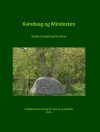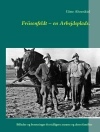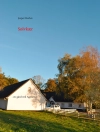This book provides a wide range of studies on methods of assessing natural disaster risks and reducing those risks in the context of land use. A major benefit of the book is that it presents extensive research and practices from interdisciplinary perspectives through case studies of land use management against various natural disasters. The natural hazards include earthquakes, tsunami, floods, and other disasters, with case studies ranging from urban areas to areas with natural environments such as mountains, coasts, and river systems. By quantitative and qualitative analysis, this work illustrates how interactions between natural and human environments create natural disasters, and how disaster risks can be managed or reduced through methods related to land use.
This book also covers a variety of challenges in land use management with sample cases from Asia as well as the United States and Europe. The main purpose is to provide greater insight into studies of natural disaster risks from the perspective of land use and the possibility of non-engineering methods to reduce those risks. This goal can be achieved through management of land use against various natural hazards in diverse environments.Table of Content
Land use Management in Disaster Risk Reduction: An Overview.- Land Use Management and Risk Communication.- Experiences of Japan in Post Hanshin Awaji Earthquake.- The Reconstruction of Bhuj – Reflecting on the Planning Process.- Land use management along fault line: experiences of New Zealand.- Experience from the United States: Post Katrina and Sandy.- Integrated land use planning in New Zealand and Canterbury earthquakes.- The rapid development of settlements in flood-prone areas in peri-urban Ulaanbaatar, Mongolia: Monitoring and spatial analysis using VHR satellite imageries.- Integration of Disaster Risk Reduction into Land Use Planning: Experience of Bangladesh.- Flood Disasters and Land Use Planning in Swat Valley, Eastern Hindu Kush.- Guinsaugon, Leyte Landslide: Experience and Lessons in Land Use Policy.- Japan’s experiences of catastrophic mountain disasters in Wakayama.- Uttarakhand disaster and land use policy changes.- Climate change and its impacts on land use/cover change and food security in Nepal.- Post Morakot Land Use Implications for Taiwan.- The Indian Ocean tsunami and land use changes in Indonesia.- Land-use and land cover change analysis using multi-date multi-spectral satellite data: An integrated study of South Chennai in Tamil Nadu State, India.- The Great East Japan Earthquake and Tsunami: Lessons for Land Use.- Land use change implications on Ba Ria Vung Tau province in Vietnam.- Land use change in Southwestern coastal Bangladesh-Consequence to Food and Water Supply.- Flood Disaster Mitigation Measures through Land Use Management in the UK and France.- River basin and land use lessons from Japan: Influences of Changes of Industrial Structure on Land Use of Nagara Basin and Flood Risk Control.- River basin and land use lessons from Bangkok, Thailand.
About the author
Michiko Banba is an associate professor at the Education and Research Center for Disaster Reduction of the University of Hyogo, Japan. Her research field is land use, land management, and urban and regional management in the context of disaster risk reduction. Her research field is mainly in Asian counties including Japan, Indonesia, and Nepal. She works closely with local governments and communities to plan and develop policies and countermeasures to reduce disaster risks and to build the capacity of communities against disaster.
Rajib Shaw was a professor in the Graduate School of Global Environmental Studies of Kyoto University, Japan. He worked closely with local communities, NGOs, governments, and international organizations, including the United Nations, especially in Asian countries. He is currently the co-chair of the United Nations Asia Science Technology Academia Advisory Group (ASTAAG) and the president of the Asian University Network of Environment and Disaster Management (AUEDM). His research interests are community-based disaster risk management, climate-change adaptation, urban risk management, and disaster and environmental education. He has published several books in the field of disaster and environmental management and is also the chief editor of the Asian Journal of Environment and Disaster Management.












